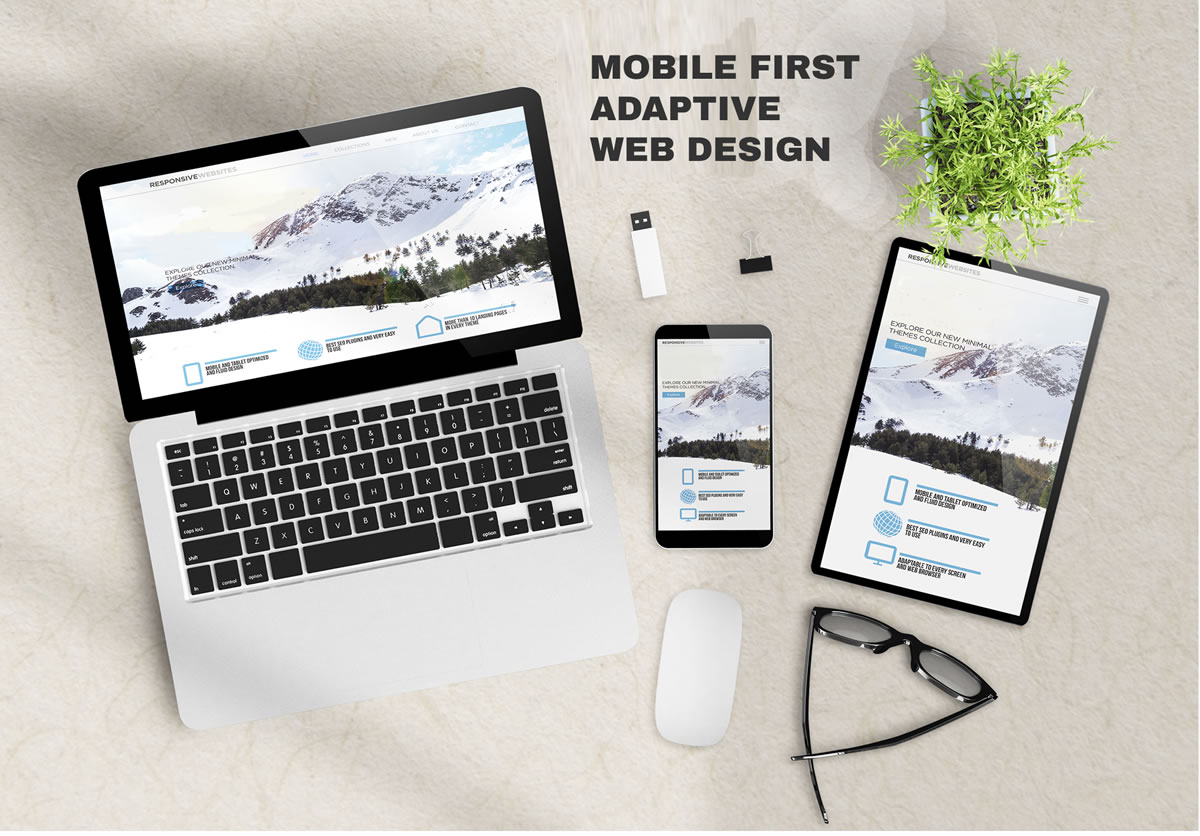

What is Mobile-First?
Mobile first is a web design and development approach that prioritizes how websites and apps desplay on mobile devices. In recent years, the use of mobile devices for accessing websites and applications has surpassed the use of desktops and laptops. As such, mobile first design has become increasingly important for businesses and organizations looking to provide a seamless and optimized user experience for their customers and users.
Mobile first design differs from traditional web design approaches, mobile first design emphasizes creating websites and applications that are optimized for the smaller screens and slower internet speeds of mobile devices. This means that mobile first design prioritizes functionality, speed, and simplicity. In doing so, businesses and organizations are better able to provide their users with the information and tools they need to accomplish their goals quickly and easily.
Another key element of mobile first design is that it allows websites and applications to adapt to different screen sizes and resolutions, making them easily accessible on a wide range of devices. This allows a mobile first built website to be easily converted into a progressive web app eliminating the need to create a separate mobile or desktop app.
Mobile first design also emphasizes the importance of content. With limited screen space and shorter attention spans, mobile users are more likely to engage with websites and applications that provide them with the information they need quickly and easily. As such, mobile first design prioritizes creating clear, concise, and relevant content that is easy to read and navigate on mobile devices.
In conclusion, with the increasing use of mobile devices for accessing information and services online, businesses and organizations that adopt mobile first design will be better positioned to provide their users with a seamless and optimized user experience, leading to increased engagement, loyalty, and business success.
Google's Mobile-First strategy
Mobile devices now account for more than half of all web traffic worldwide. In recent years, Google has been focusing much more on mobile devices. This is due to the rise of mobile usage and the shift in user behavior from desktop to mobile devices. The shift in focus towards mobile devices has led Google to adopt what is known as a “mobile-first” strategy.
Google has embraced this strategy by making changes to its search engine algorithm, prioritizing mobile-friendly websites in search results. They have also developed mobile-first indexing, where they use the mobile versions of websites as the primary search index.
One of Google's biggest initiatives is to improve the user experience on mobile devices, which is where mobile-first strategy comes into play. As more and more people access the internet through their mobile devices, it is essential for Google to ensure that the mobile user experience is seamless and efficient.
Google's mobile-first strategy is not just limited to search engine rankings, but it includes all aspects of their business, including their suite of mobile applications. Google has invested heavily in developing mobile applications, including Google Maps, Gmail, and Google Docs. Through these applications, they have been able to provide users with quick and easy access to information and tools, regardless of the device they are using.
In summary, More and more people are using mobile devices to access the internet, Google's focus on mobile-first design and mobile-friendly websites is going to become increasingly important. As such, businesses that want to succeed in the digital age need to prioritize mobile devices and embrace mobile-first design to keep up with Google and the ever-evolving digital landscape.
Heading
To add this web app to your homescreen, click on the "Share" icon
![]()
Then click on "Add to Home"

To add this web app to your homescreen, click on the "Share" icon
![]()
Then click on "Add to Home"

It looks like your browser doesn't natively support "Add To Homescreen", or you have disabled it (or maybe you have already added this web app to your applications?)
In any case, please check your browser options and information, thanks!
It looks like your browser doesn't natively support "Add To Homescreen", or you have disabled it (or maybe you have already added this web app to your applications?)
In any case, please check your browser options and information, thanks!



